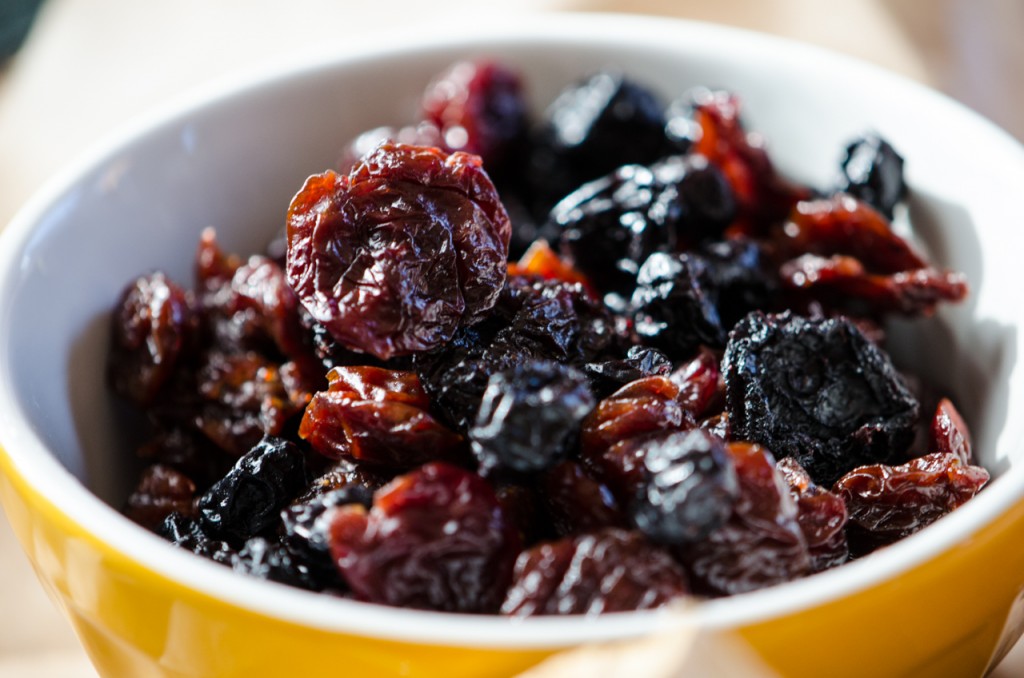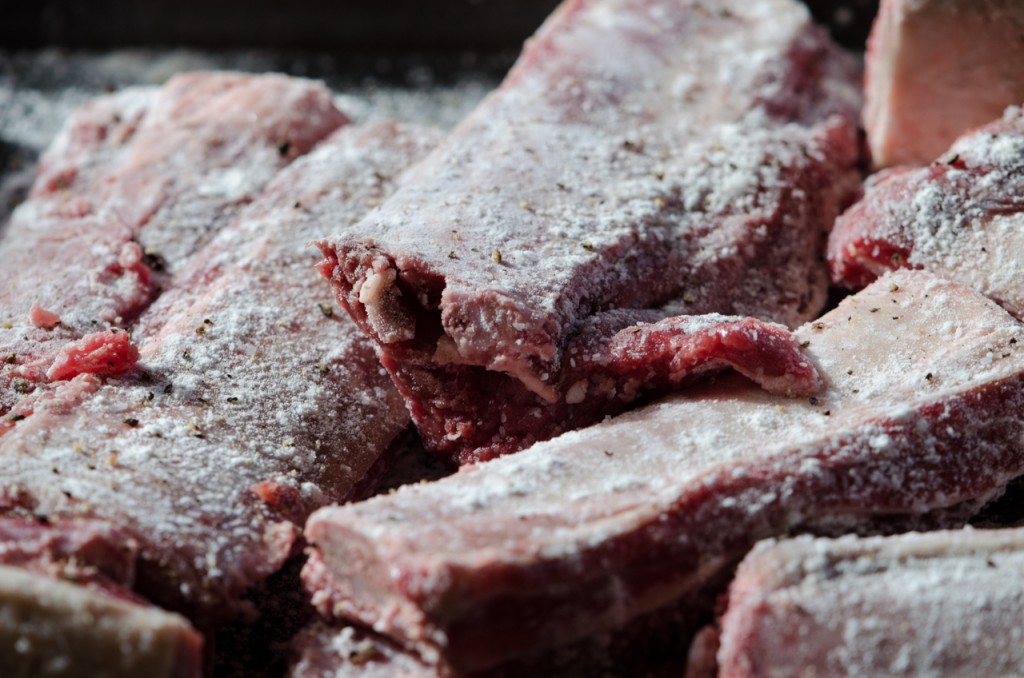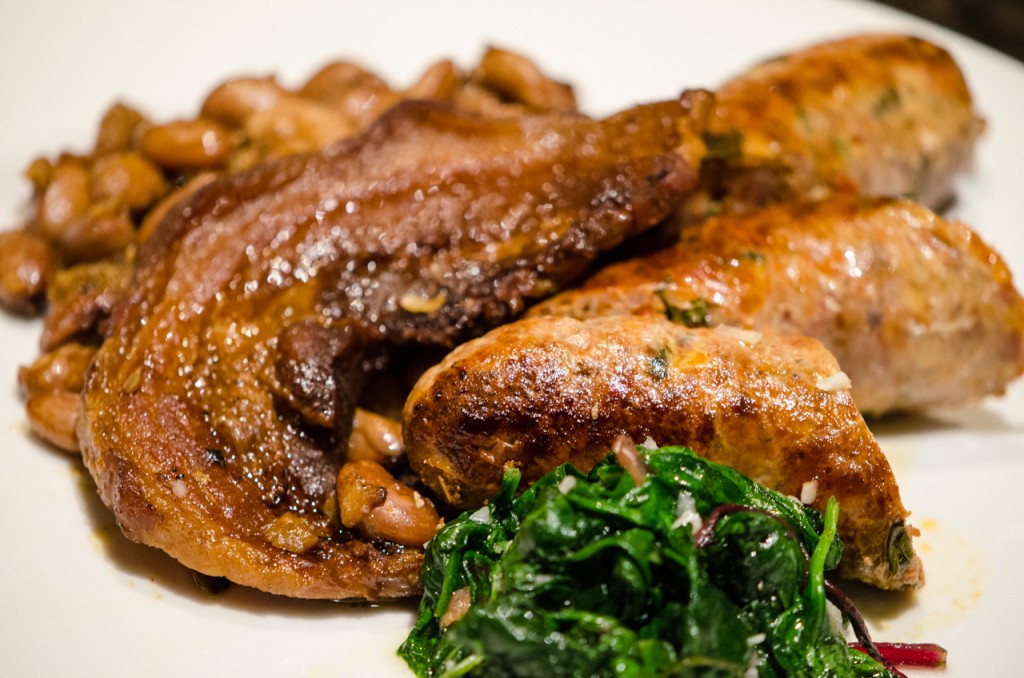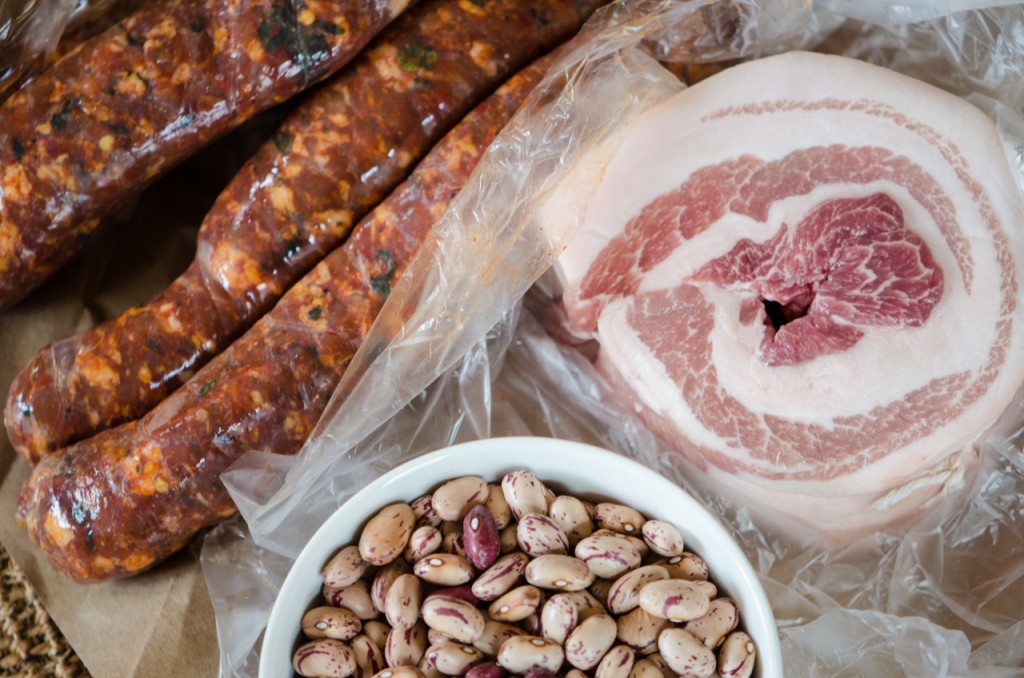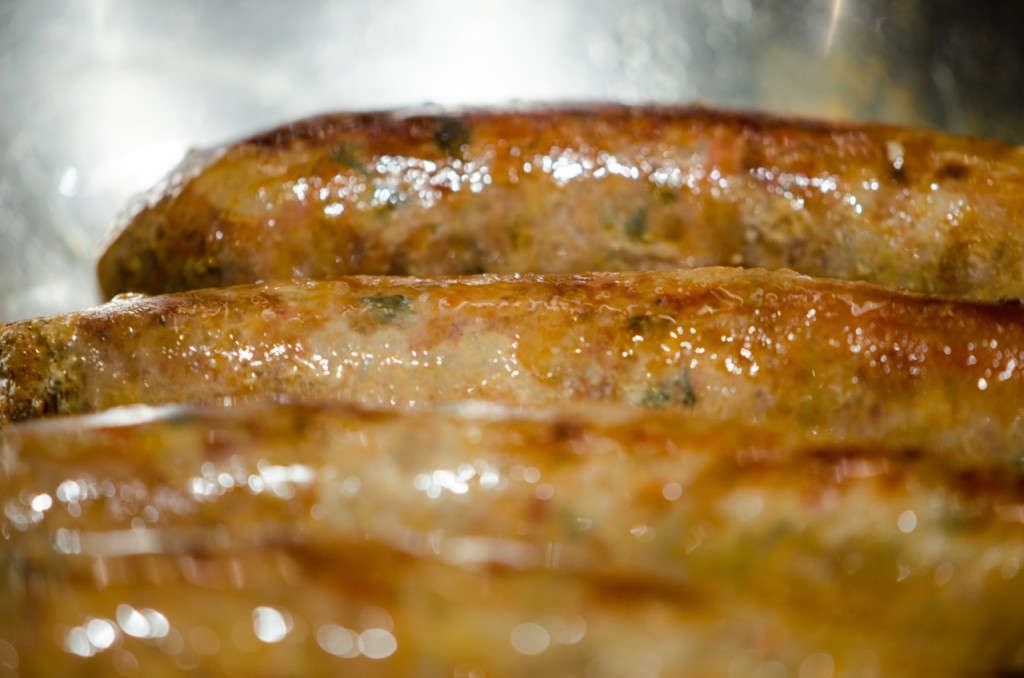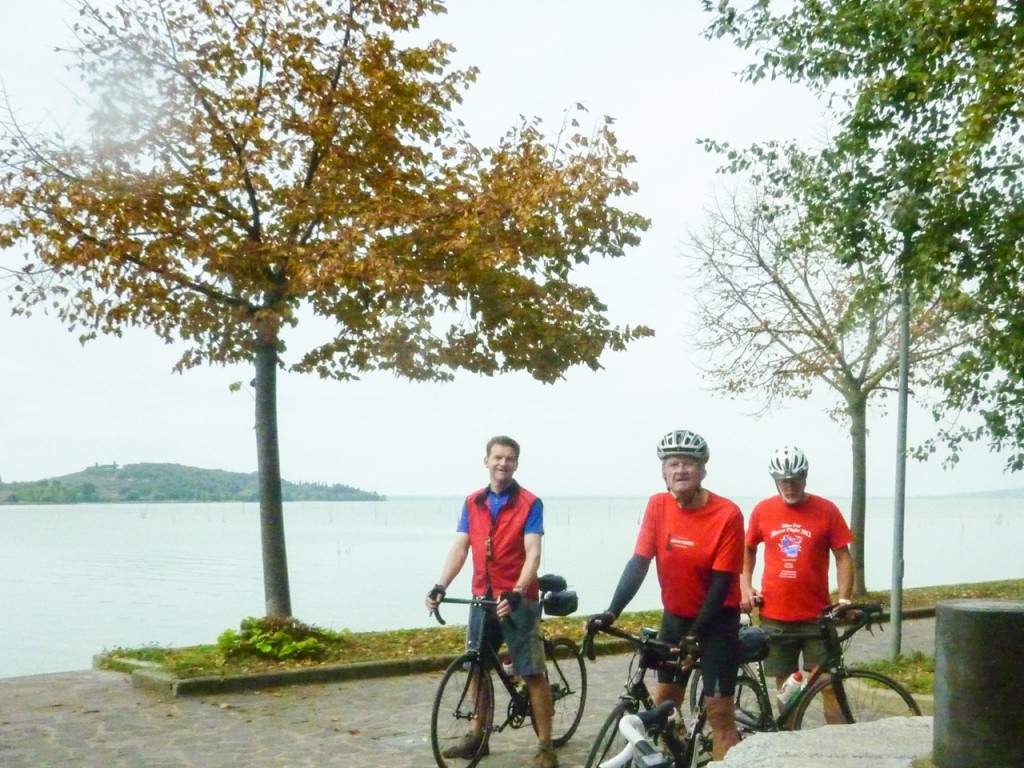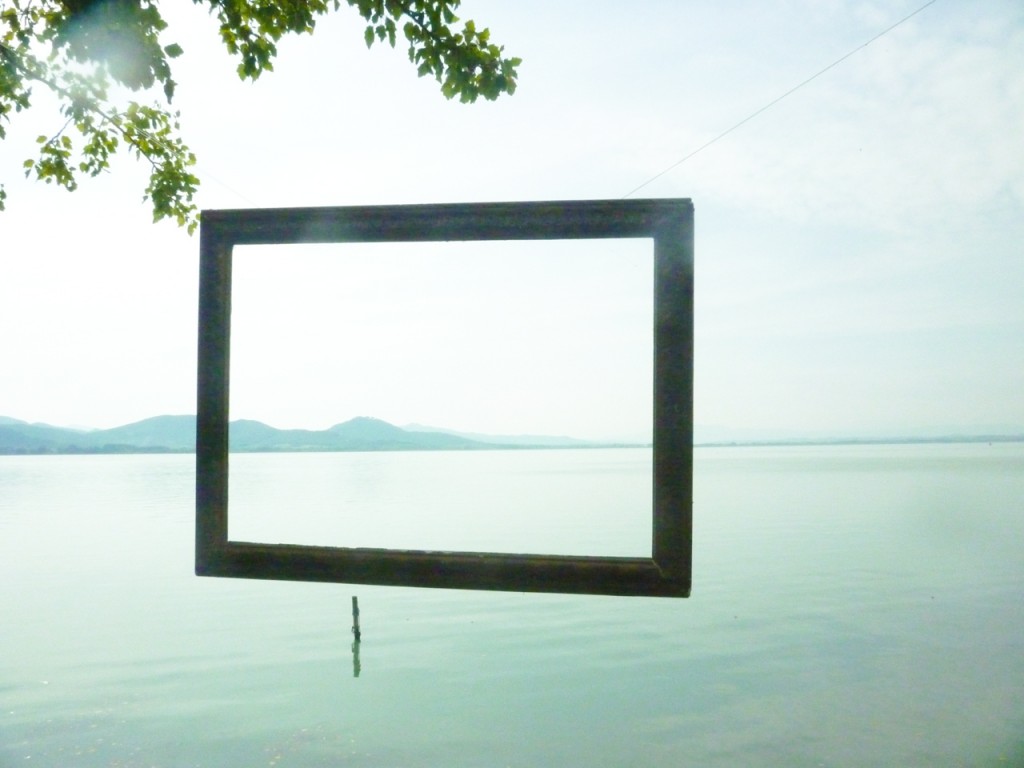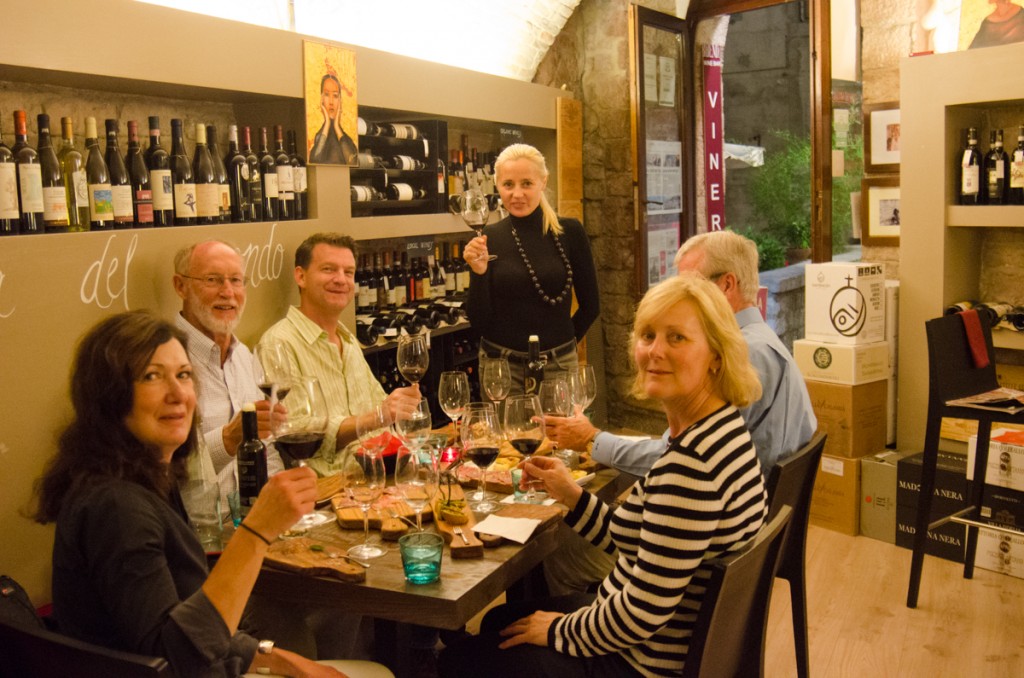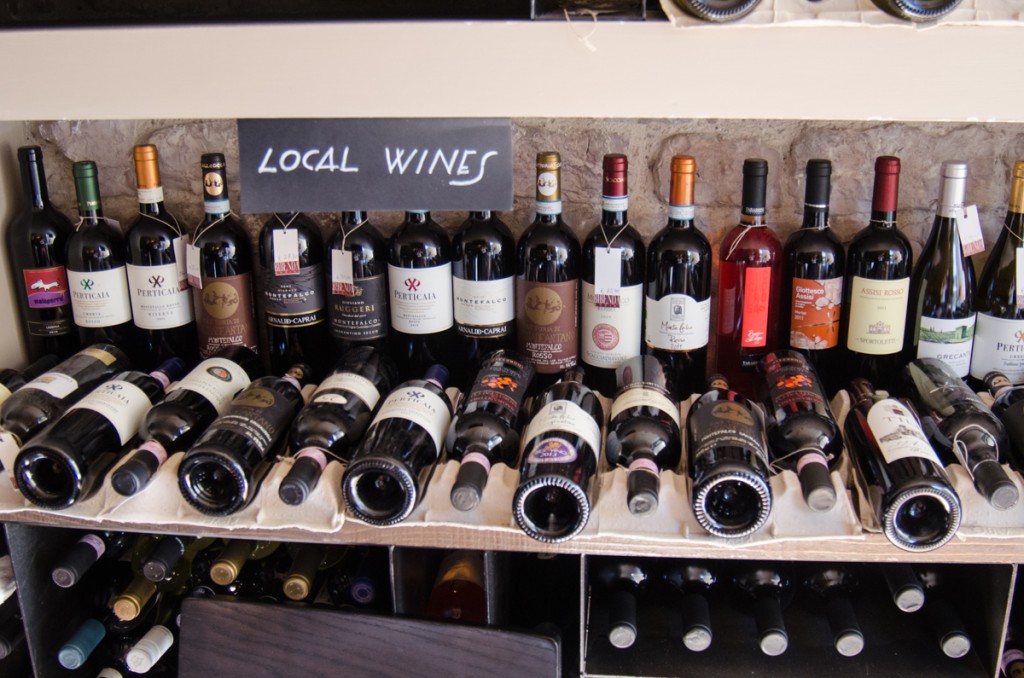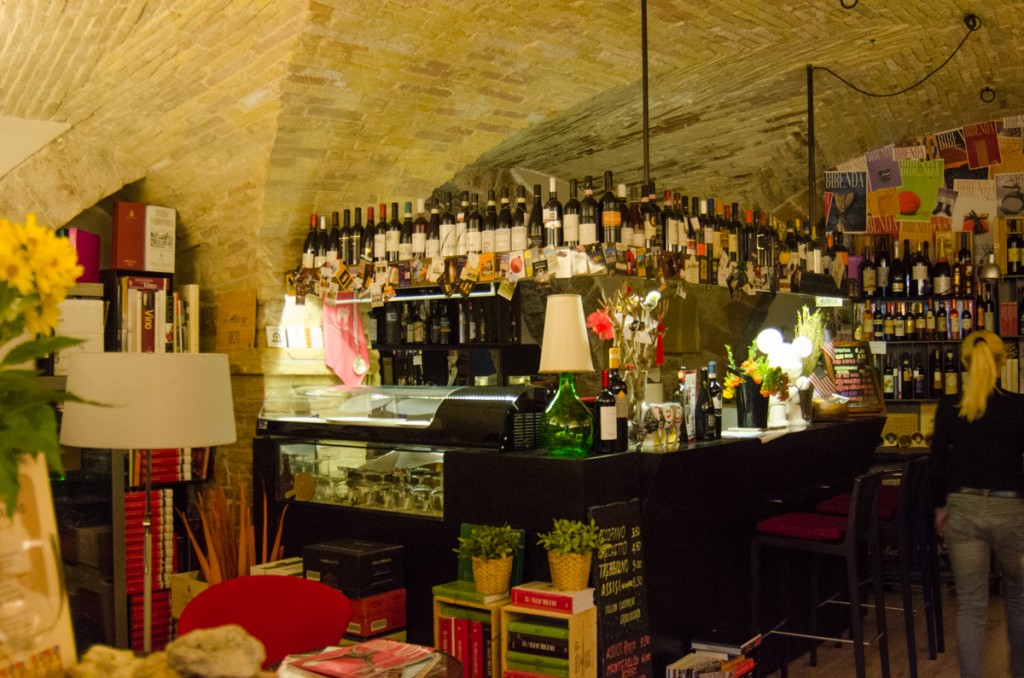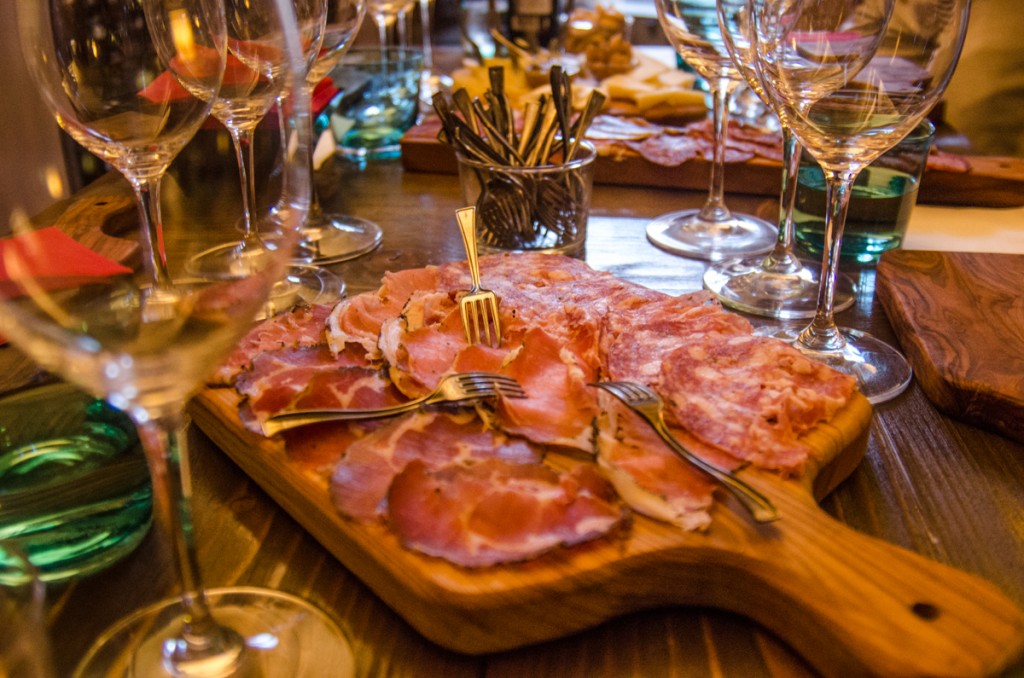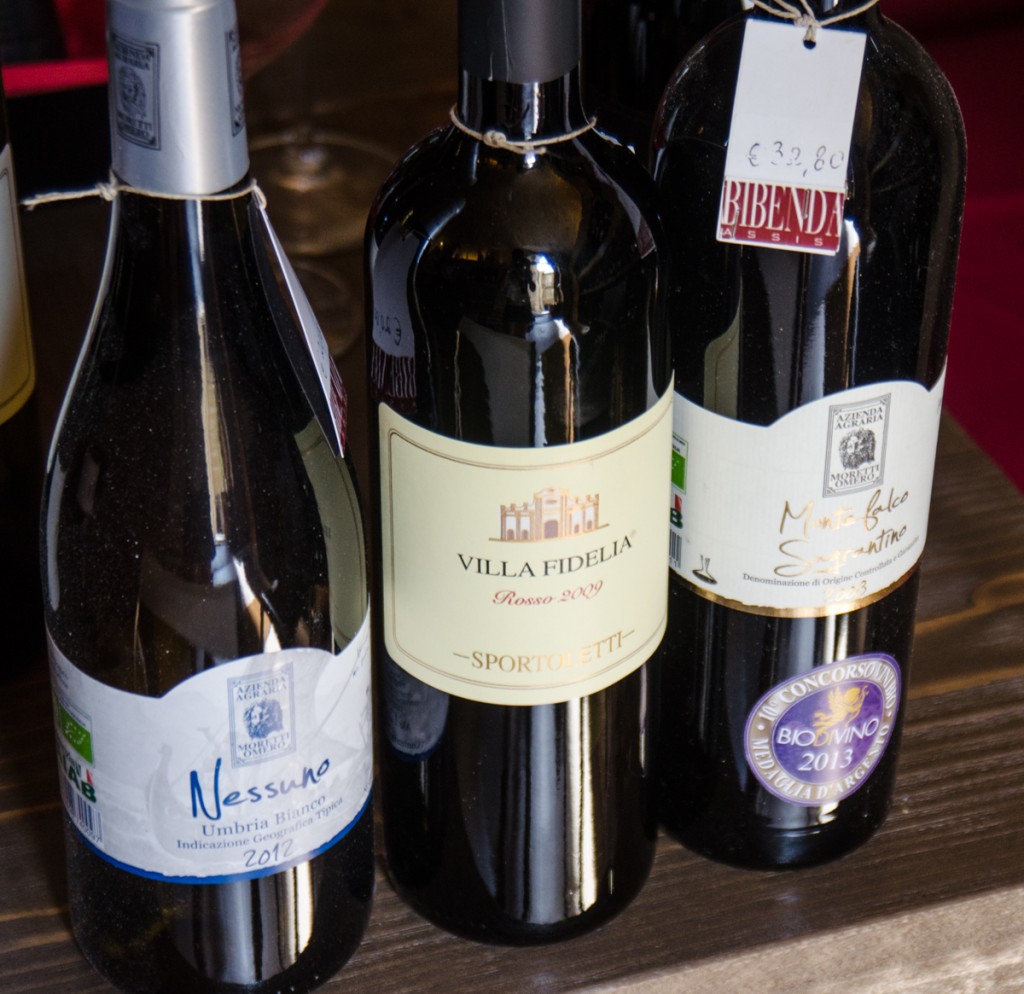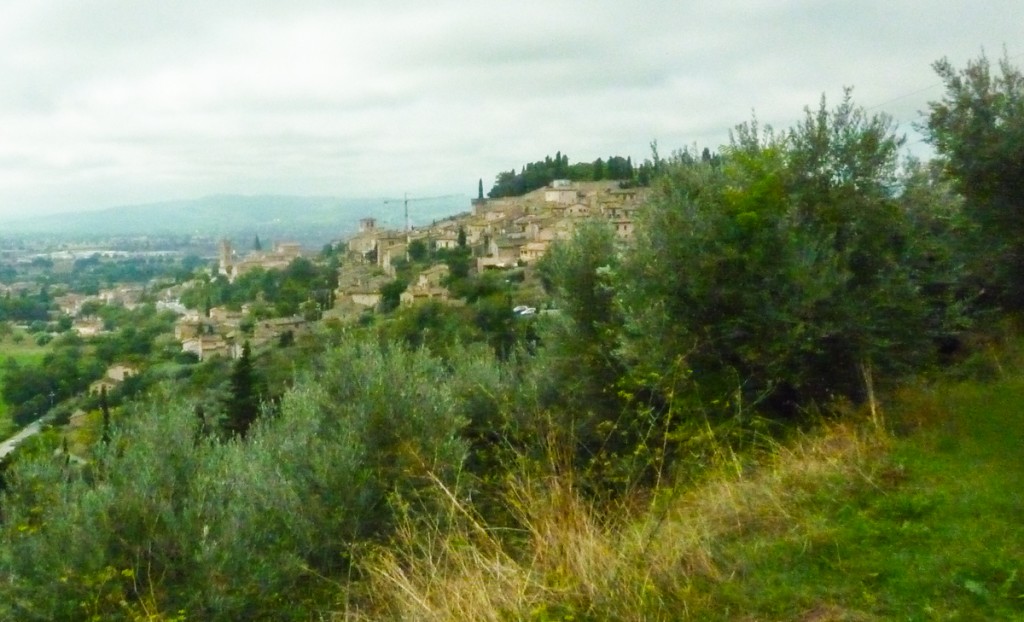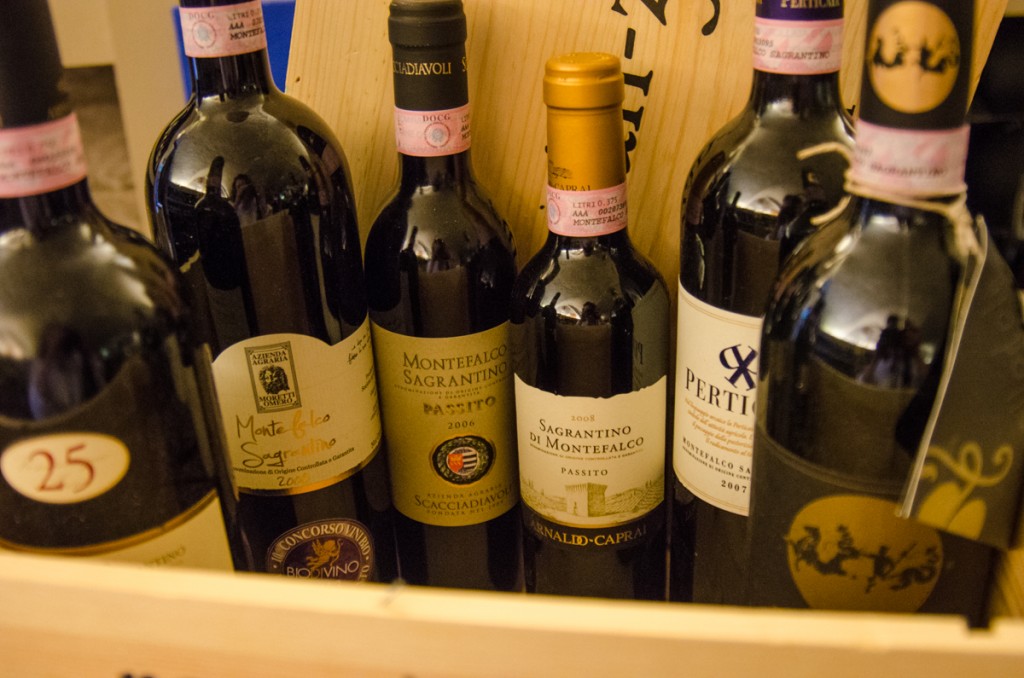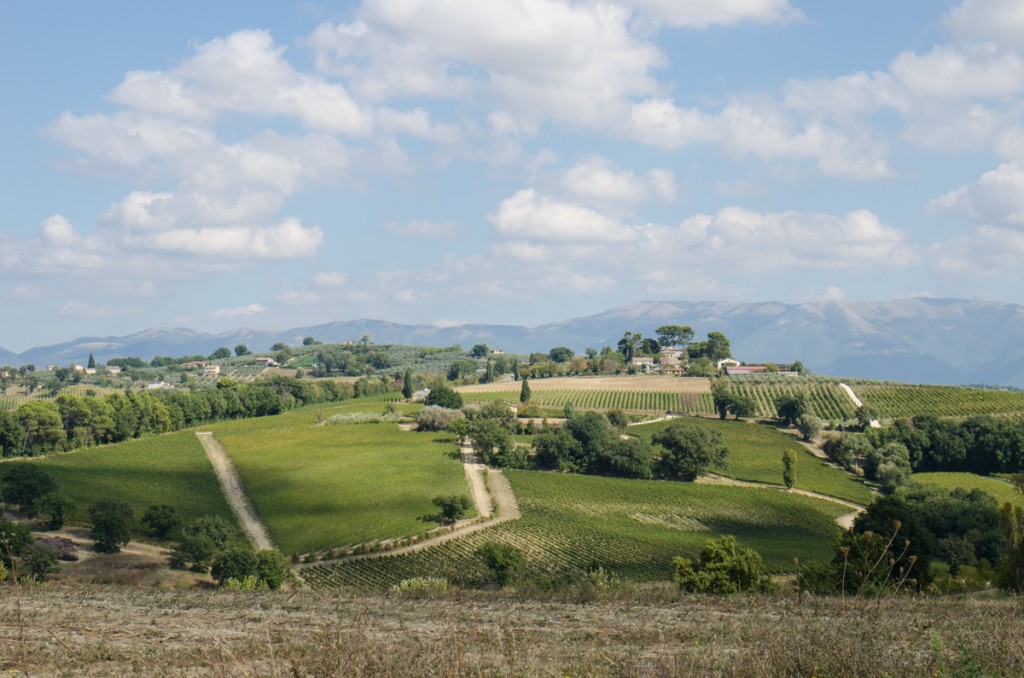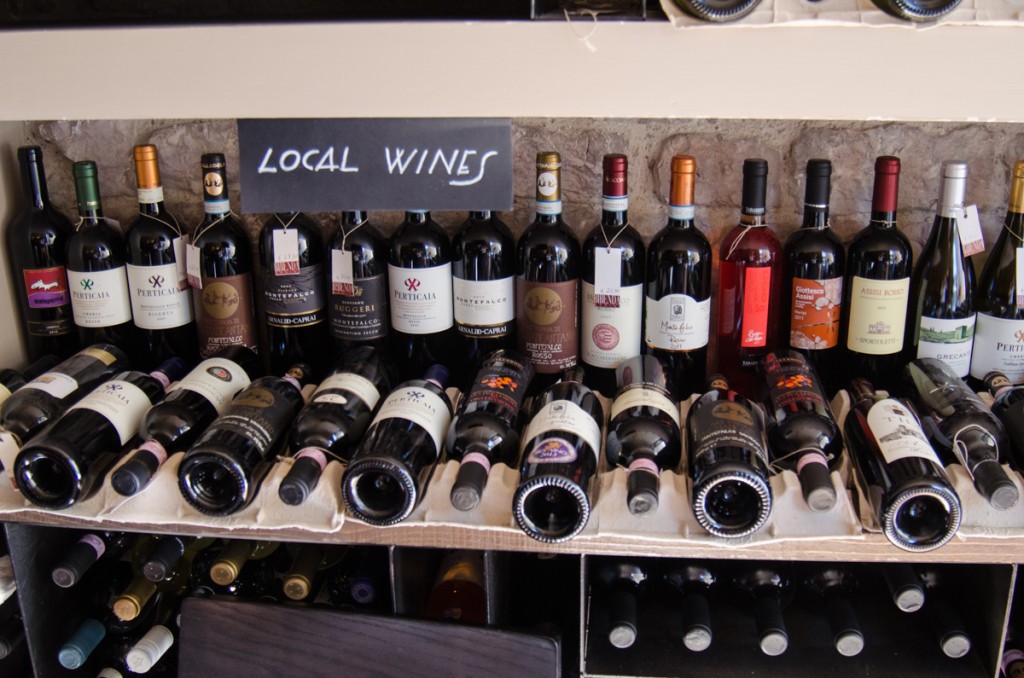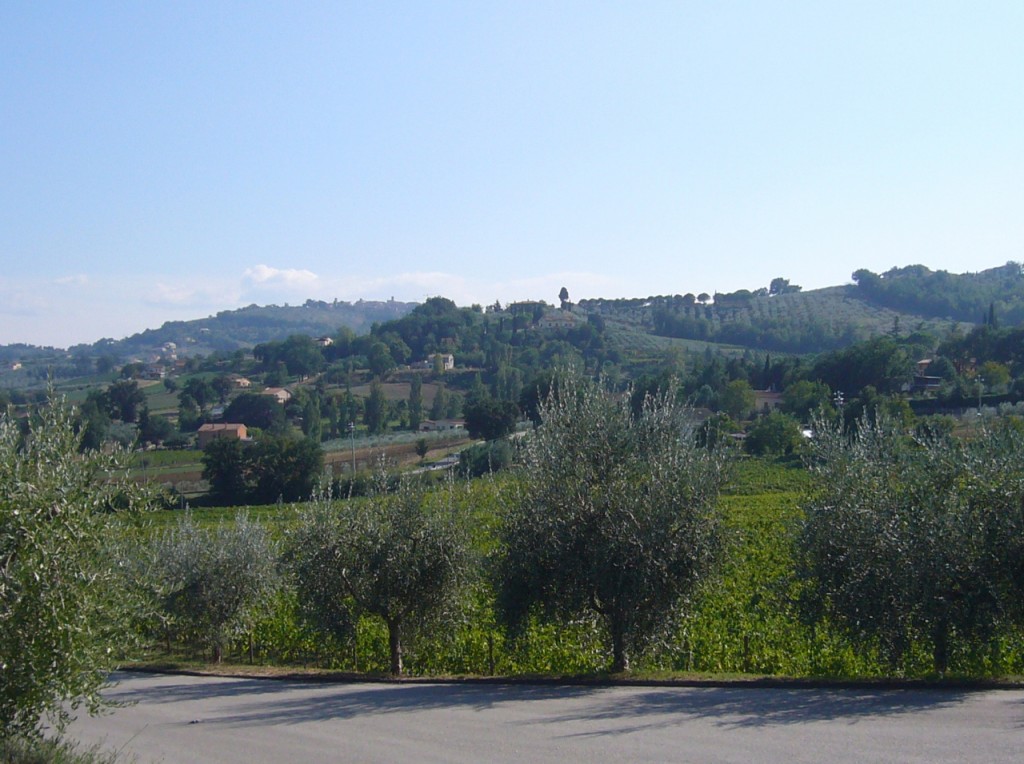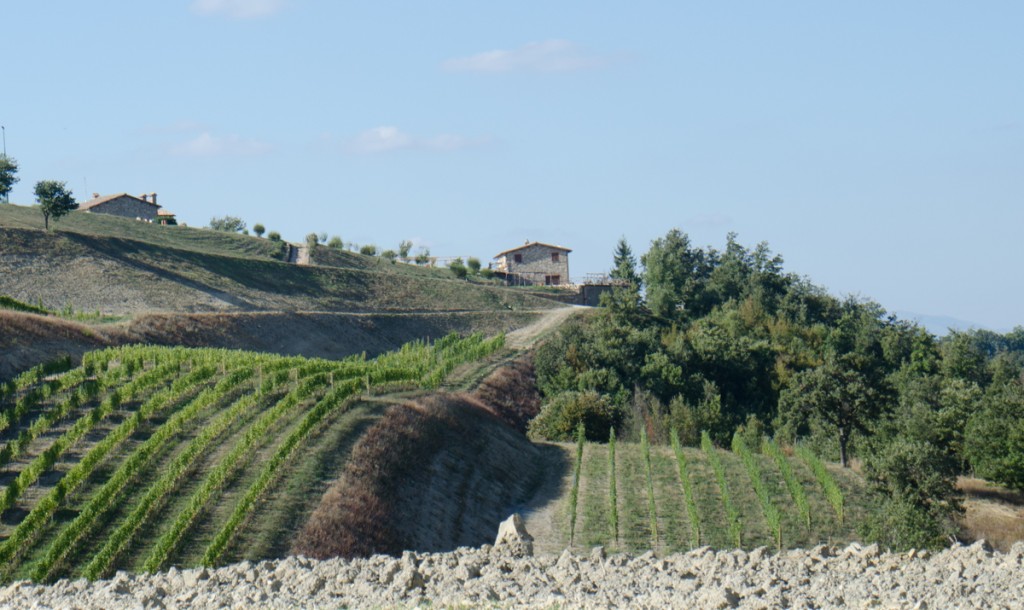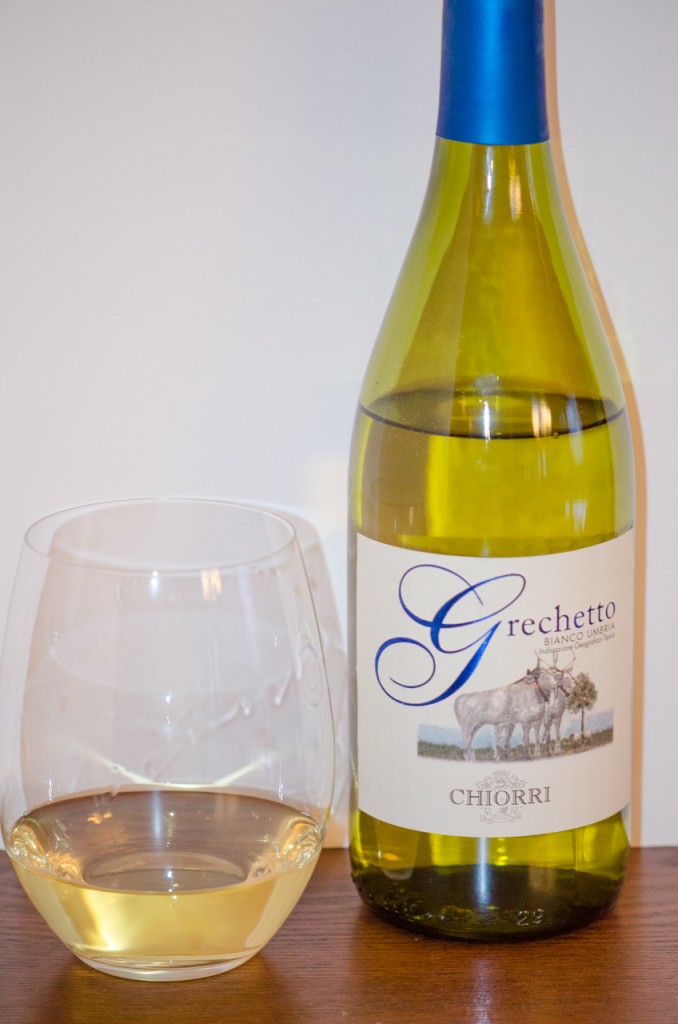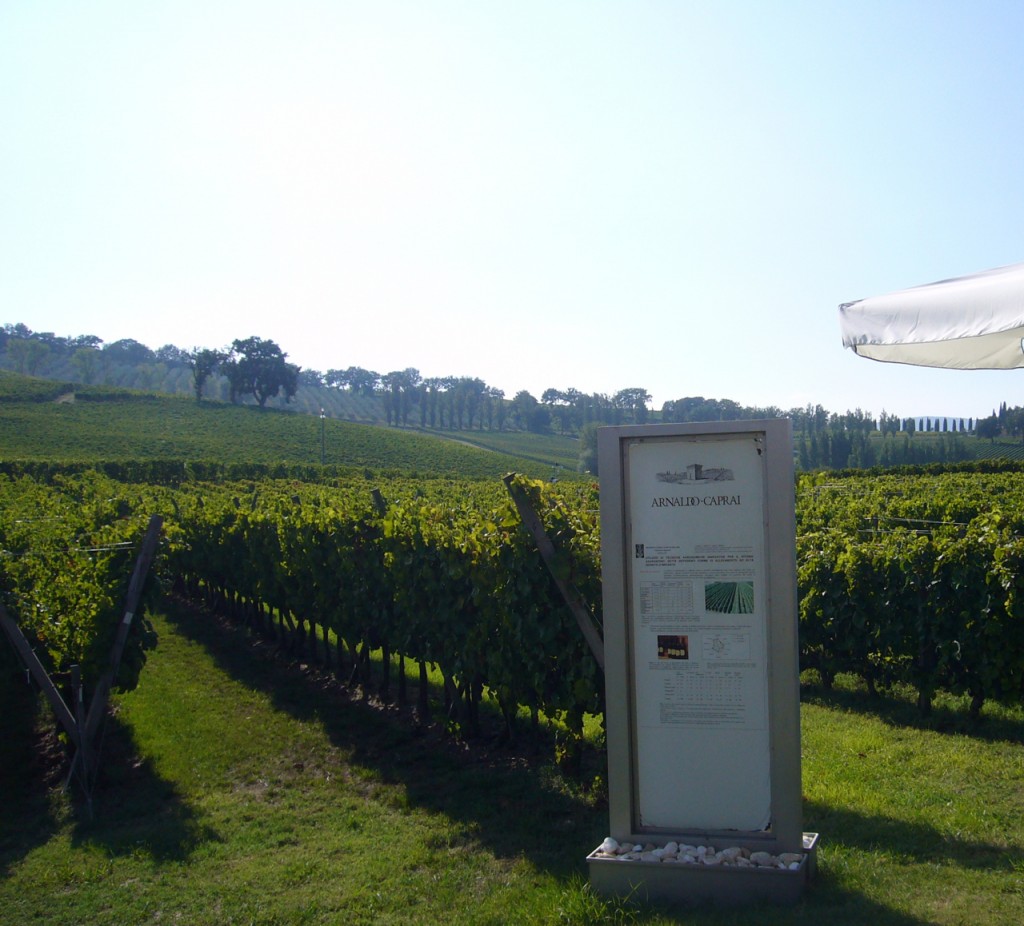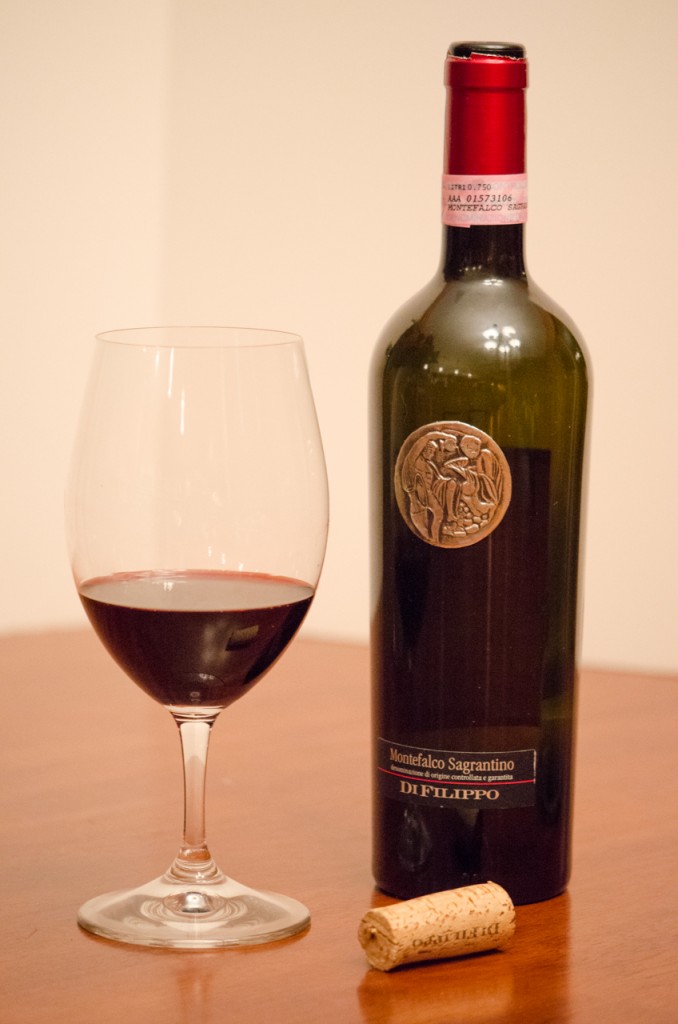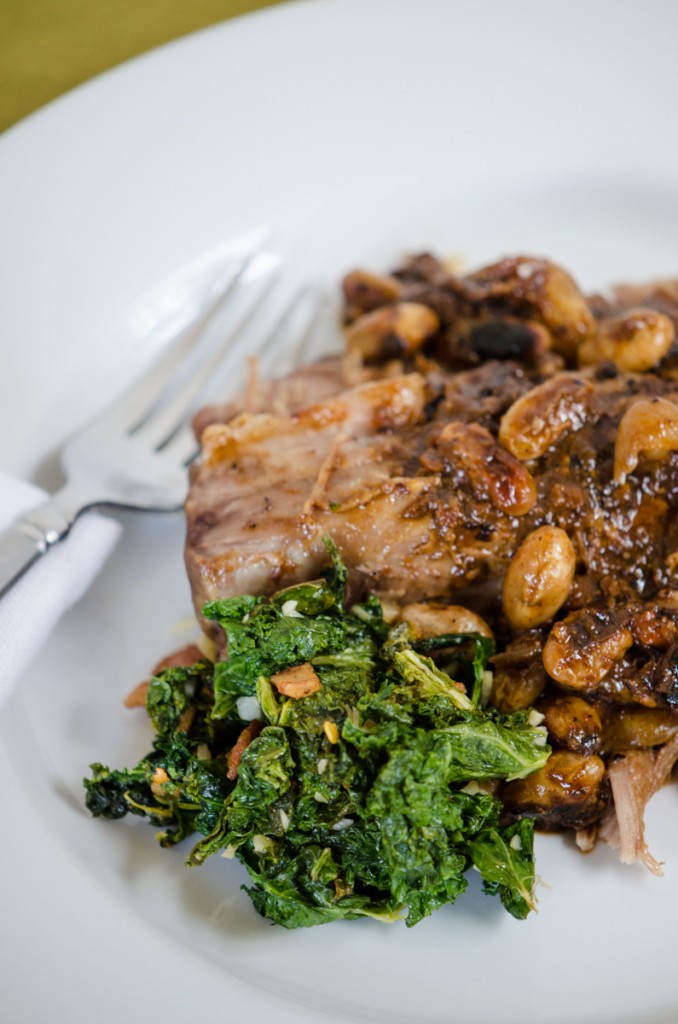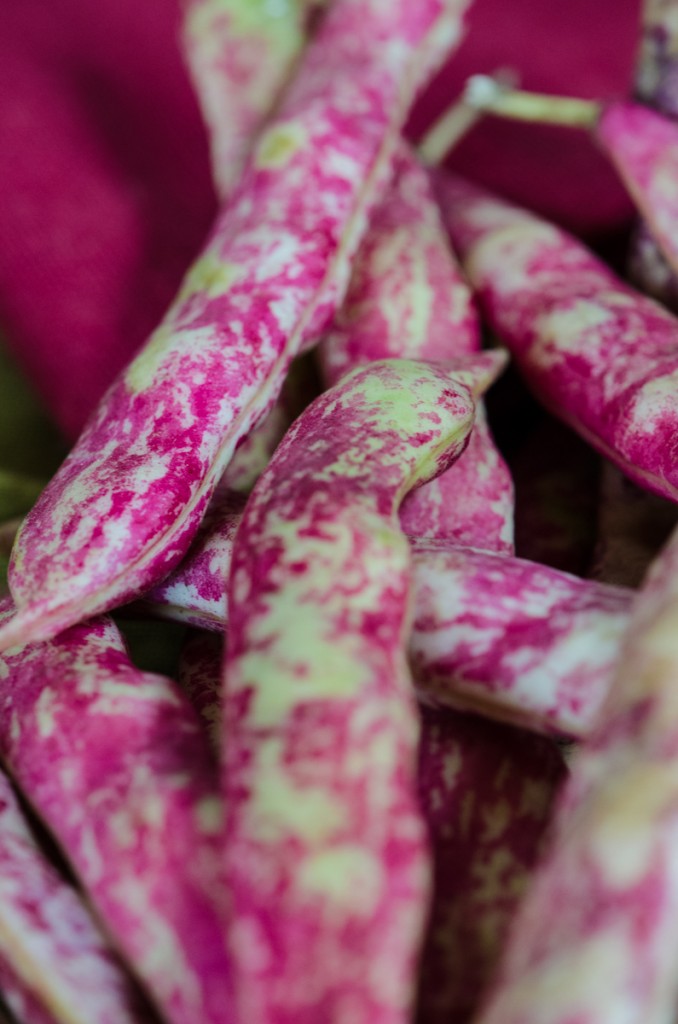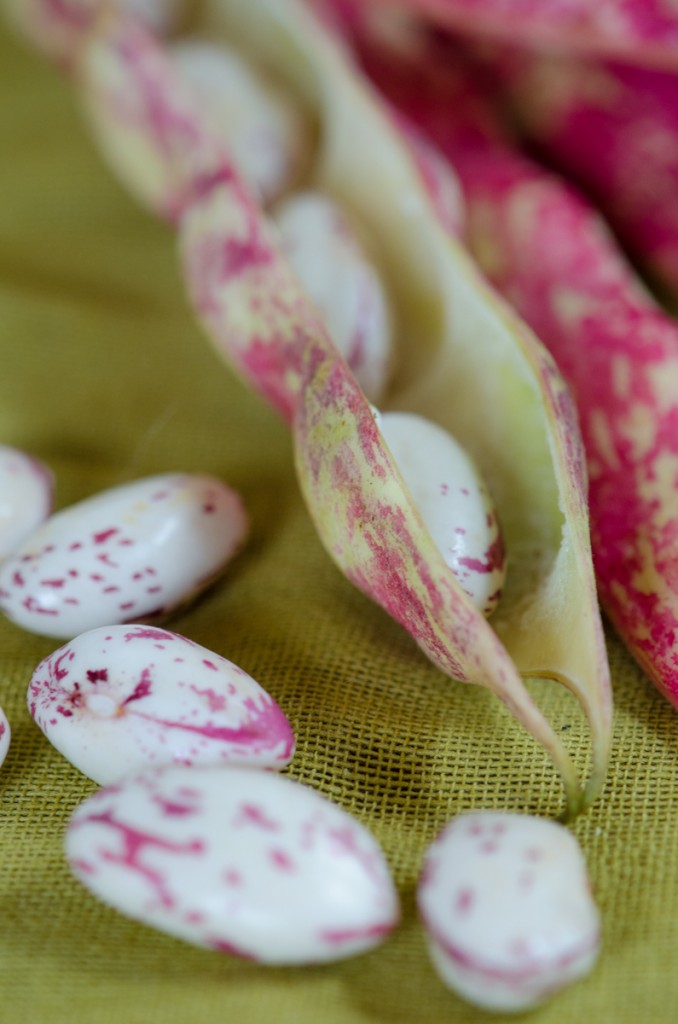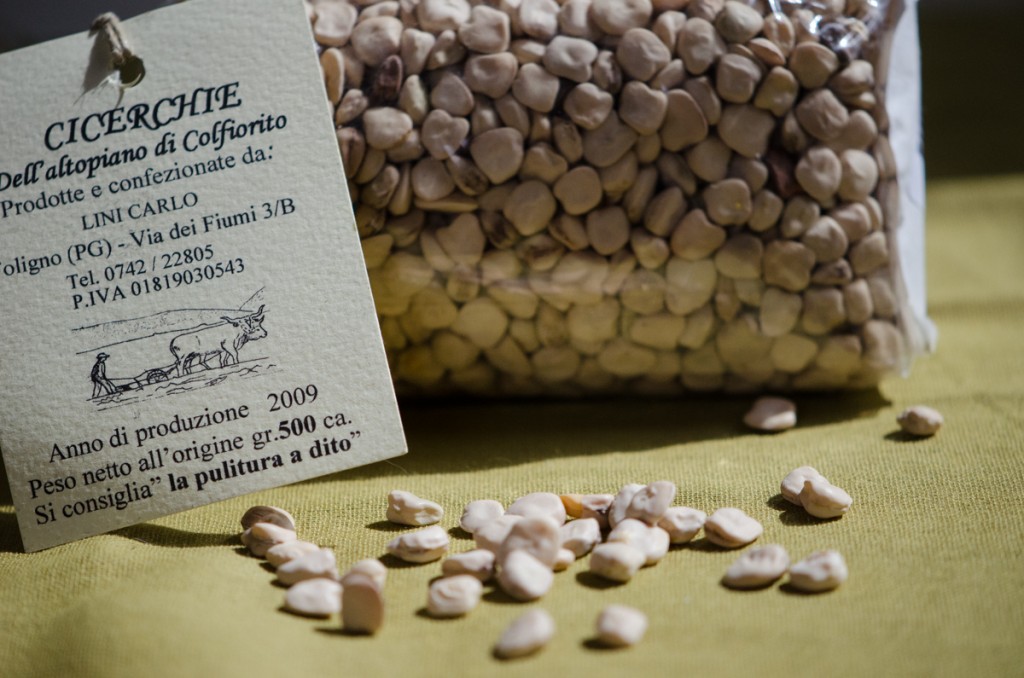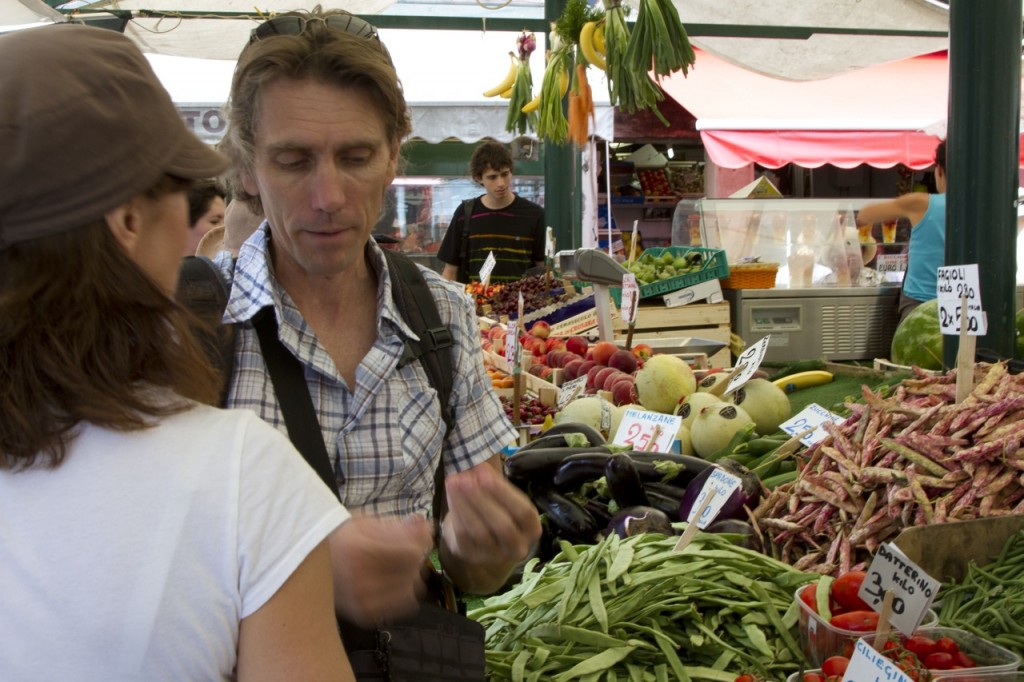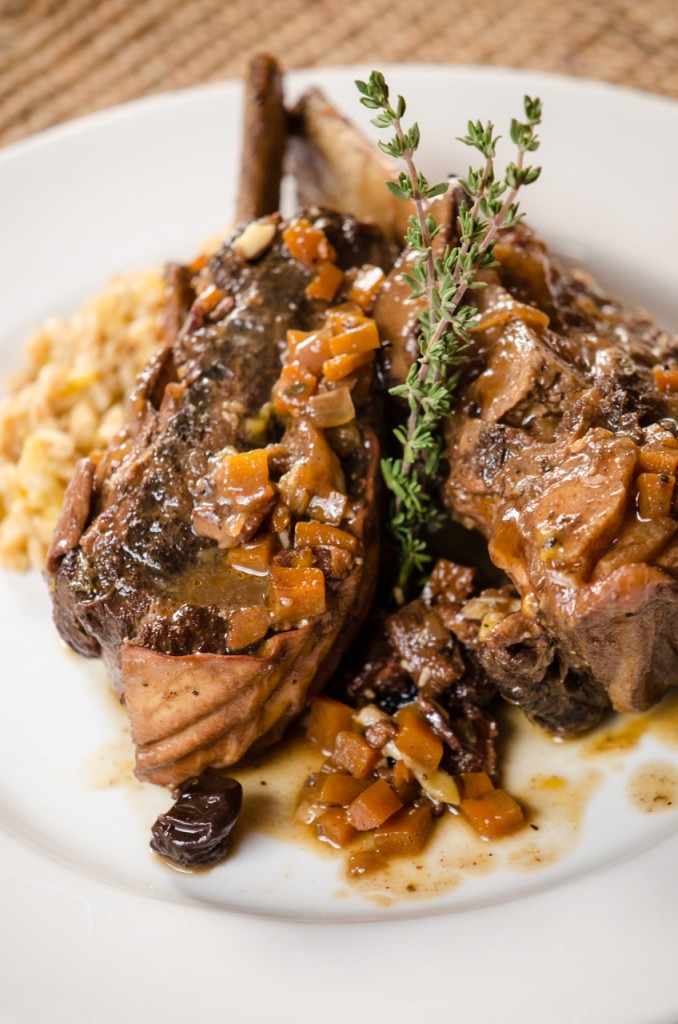 Last weekend, I attended a reunion of “Bike Trippers”, hosted by friends and guests on past bike tours. It was wonderful to see everyone, reminisce about our adventures in Italy, all while enjoying great wine and a fantastic meal.
Last weekend, I attended a reunion of “Bike Trippers”, hosted by friends and guests on past bike tours. It was wonderful to see everyone, reminisce about our adventures in Italy, all while enjoying great wine and a fantastic meal.
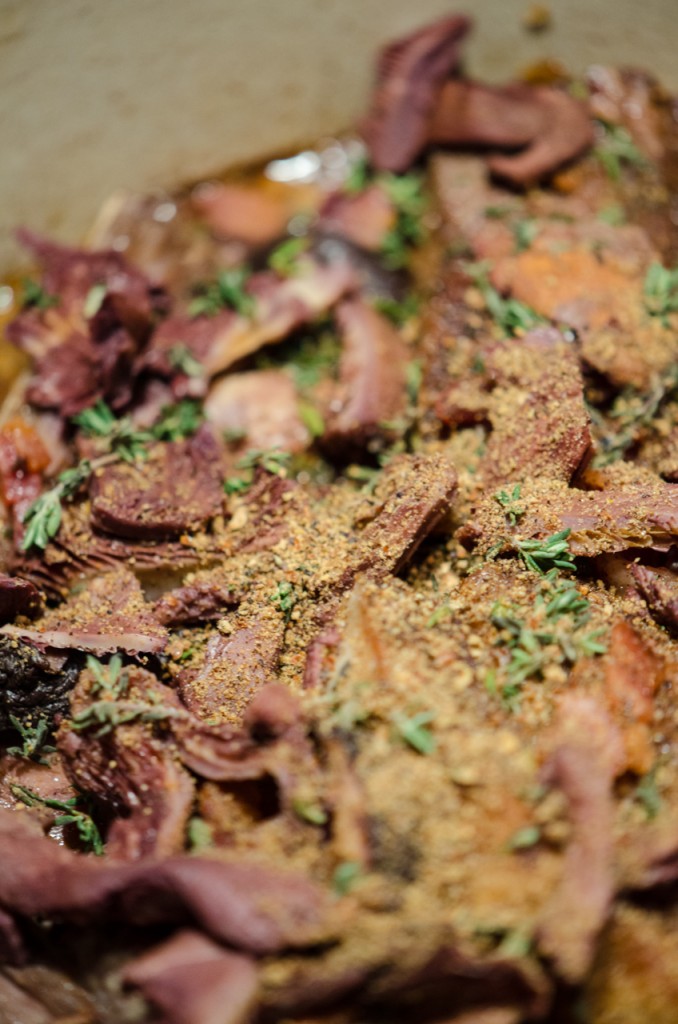
It is now late October, with many cold days ahead of us – the first few snow flakes of the season are falling as I write this. So my menus begin to move away from the grill, and to slower, hearty dishes like braising. Our chefs for our reunion dinner, Lena and BA, served some absolutely fantastic braised short ribs, faithfully reproducing our favorite chef Jody Adams recipe from her book “In the Hands of a Chef”. Her eastern Mediterranean inspired recipe uses red wine, dried apricots, olives, cinnamon and cloves, and all these great flavors combine with the juices and fats from the meat to produce a sublime dish.
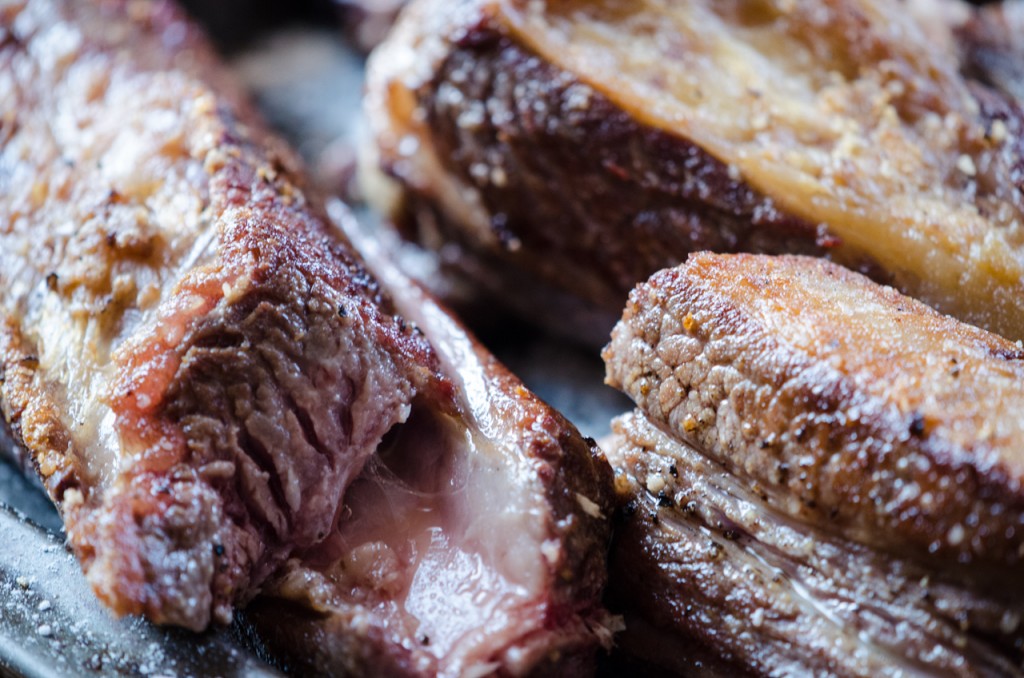 A few days after the dinner, with a stack of short ribs in my refrigerator, I had Jody’s recipe on my mind as I perused my Italian cookbooks for inspiration. I found it in a recipe for cinghiale (wild boar) from the Valle Antrona in Piemonte. Located in the mountains, south of the Swiss border, this recipe reflects many products you will see in mountainous areas throughout Italy, mushrooms, juniper berries, and ‘frutti di bosco’, fruits of the woods, which would be any available berry, from blueberries to blackberries to huckleberries. On our recent cycling tour in Umbria, with its hills and woods and history of hunting, we found cinghiale, mushrooms and juniper berries on many a menu.
A few days after the dinner, with a stack of short ribs in my refrigerator, I had Jody’s recipe on my mind as I perused my Italian cookbooks for inspiration. I found it in a recipe for cinghiale (wild boar) from the Valle Antrona in Piemonte. Located in the mountains, south of the Swiss border, this recipe reflects many products you will see in mountainous areas throughout Italy, mushrooms, juniper berries, and ‘frutti di bosco’, fruits of the woods, which would be any available berry, from blueberries to blackberries to huckleberries. On our recent cycling tour in Umbria, with its hills and woods and history of hunting, we found cinghiale, mushrooms and juniper berries on many a menu.
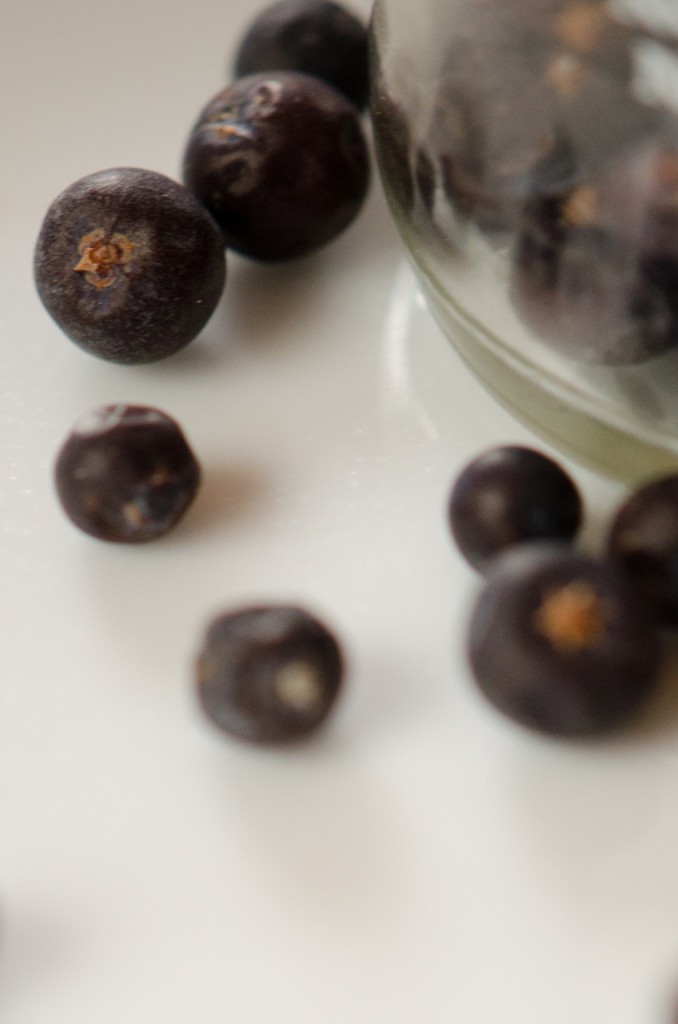
Here, I’ve adapted Jody’s recipe to produce my own version, using the flavors from the Piemonte recipe. As with pretty much any braise recipe, this dish is best when prepared the day before, and the flavors allowed to blend and ripen before serving.
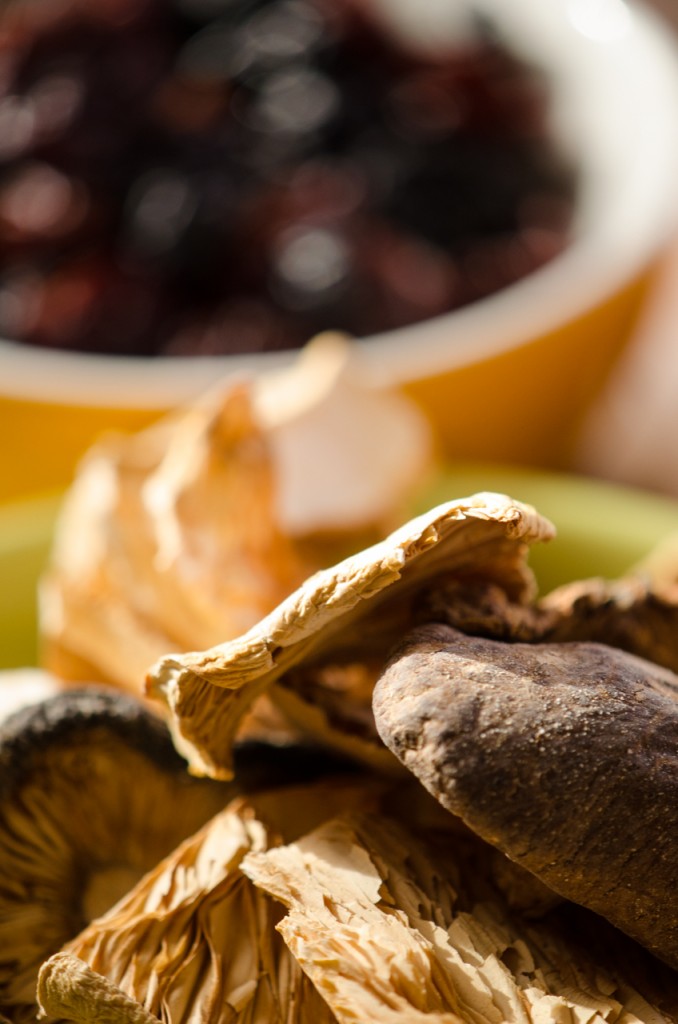 Costolettine di Manzo Brasate ai Frutti di Bosco
Costolettine di Manzo Brasate ai Frutti di Bosco
2 cups red wine
1/2 cup grappa
4 ounces dried mushrooms
8 beef short ribs
Kosher salt and freshly ground black pepper
2 tablespoons unbleached all-purpose flour for dusting
2 tablespoons vegetable oil
2 ounces smoked bacon, cut into 1 x 1/4-inch lardons
2 medium carrots, peeled and chopped into 1/2-inch dice
1 medium onion, chopped into 1/2-inch dice
16 garlic cloves, smashed
1 tablespoon tomato paste
1 tablespoon thyme leaves
2 tablespoons ground juniper berries
2 cups chicken stock
1 1/2 cups dried berries – cranberries, blueberries, blackberries
Combine the red wine and grappa in a small bowl. Add the dried mushrooms and allow to soak for 30 minutes or more.
Season the ribs with salt and pepper. Dust with the flour. Heat the oil in a large braising pan over medium-high heat. Add the bacon and cook until most of the fat is rendered, then remove and set aside.
Add as many ribs as can fit in a single layer to the pan. You will need to cook them in batches, with some space between them so they sear and not steam. Sear the ribs on all sides until well browned, then remove from the pan and set aside. Repeat with the remaining ribs. Discard all but 2 tablespoons of the fat from the pan.
Lower the heat to medium, add the carrots and onions, season with salt and pepper, and saute until the vegetables begin to brown, about 10 minutes. Add the garlic and tomato paste and cook for 4 more minutes. Add the red wine, grappa and mushrooms and reduce the liquid by half. about 6 minutes.
Return the ribs and the bacon to the pot. Add the remaining ingredients except for the berries and bring to a boil. The liquid should come one-third of the way up the ribs – if not, add some water. As soon as the liquid comes to a boil, turn down the heat as low as possible and cover the ribs tightly with parchment paper and then a layer of foil, pressing both down into the pan, then place a lid on the pan. Alternatively, you can place the pot in a preheated 325° oven.
Braise the ribs for 2 hours, turning them every 30 minutes so they cook evenly. Add water as necessary to keep the braising juice one-third of the way up the ribs.
After 2 hours, add the berries and cook for an additional 30 minutes. The meat should be almost falling off the bones. Transfer the short ribs to a large platter. Spoon the vegetables, mushrooms and berries over them. Keep warm.
Strain the braising juices into a clear glass container and siphon or skim off the fat. The braising juices may already be the consistency of a sauce. If not, return them to the pan and boil for a few minutes to thicken. If you prefer an absolutely smooth sauce, strain out any remaining pieces of vegetable. Taste, and season with salt and pepper. Pour the sauce over the ribs and serve immediately.
